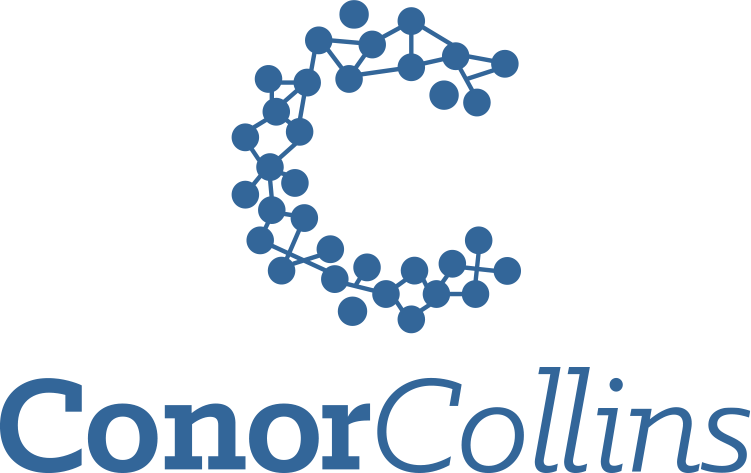As medicine moves toward a more person-centered approach, the discussion around biopyschosocial determinants of health and how they influence one’s experience post-injury continues to evolve.
The world of concussion is no different. A concussion, broadly defined, is a traumatic brain injury induced by biomechanical force (McCory et al., 2017). In short, a mechanical event causes a cascade of neuro-metabolic changes that result in a host of symptoms that can manifest differently person to person (Giza et al., 2014). The challenging thing for a clinician is that these symptoms are often numerous, can be ambiguous in nature, and can mimic symptoms of many other conditions; diagnosing a concussion for these reasons can be challenging.
Advancements are constantly happening in the world of concussion research, which helps us develop “best practice” frameworks. Biopsychosocial models of medicine have been regularly used in certain clinical contexts successfully (as in the case of persistent pain). We are seeing this model reflected in the field of concussion management too. Given the success of the biopsychosocial framework in other contexts, how can a clinician apply this framework when working within concussion management?
Biology
Following a concussion injury, a person may experience a host of symptoms. These may include (but are not limited to): headache, dizziness, nausea, vertigo, fatigue, and eye strain. For much of the population these symptoms have a tendency to resolve rather quickly; however, in some instances symptoms have been shown to persist, and some research (while not definitive) indicates that up to 10-30% of people will struggle with persistent symptoms after concussion (Barlow et al., 2010; Cnossen et al., 2018).
When considering biology and its influence on a person’s experience post-injury, a common point of discussion includes co-morbid neck injury, age, sex, and history of previous concussion (Ellis et al., 2019). It’s important to note that a person with a concussion diagnosis may have other conditions that overlap and compound their experience with symptoms, often leading to assumptions about these symptoms being a result of concussion, when the source may be other compounding conditions. The list of conditions that can lead to headache, or dizziness, or vertigo, or nausea (etc) is substantial and should be considered in full.
The most common physical symptom following a concussion is post-concussive headache (McCory et al., 2017). While the experience of this symptom (along with others) is often physical, our understanding of symptom experiences have led us to recognize that often pain (in addition to other symptoms) is multifactorial in nature.
Psychology
There are several psychological considerations that may be contributing to person’s experience following a concussion. Clinical or sub-clinical mood disorder can create a difficult environment for someone that is struggling with a concussion. Beyond clinical diagnoses, several cognitive stressors of life (anxiety and depression) may also make it difficult to manage physical symptoms, maintain daily routines and social circles. Early management of sleep in addition to the occurrence (or resurgence) of mood disorder are often priorities in those suffering from a mild traumatic brain injury (McCory et al., 2017). There have been great strides to increase the awareness of how the maintenance of mental health can influence a person’s everyday life. Clinicians may consider creating safe and inviting spaces for conversations around mental health.
Screening tools may also be used to help direct people who are looking for support. While many screening tools are available, common tools that are used include (but are not limited to): the GAD-7 for generalized anxiety (Spitzer et al., 2006), and the PHQ-9 for depression (Kroenke et al., 2001). It should be noted that while these tools are validated and used to screen for anxiety and depression, the research of these tools within the concussion-specific population is ongoing. Inviting the person to secure themselves an adequate support system (if they don’t already have one) while navigating the injury process may help.
There are a number of supports available to people experiencing concussion. These resources may include formal counselling, peer groups, colleagues and teammates. Modifying (rather than eliminating), certain aspects of a person’s daily living activities may offer a sense of normalcy in terms of routines and structure (Register-Mihalik et al., 2020). This may have a positive affect on mood and recovery. There are several contextual factors to consider in creating a person-centred approach to care that actively involves the injured individual while allowing for best outcomes.
Sociology & Behaviour
A driving factor for the success of recovery from concussion is often access to good quality care and social supports. Patient education, early interventions and active-recovery are not accessible to all individuals that have suffered from a concussion. While care and resources may be available, social settings or pressures may influence how an individual accesses care, if at all. These factors may be based on gender, age, cultural background, and poverty (to name a few). People could be fearing a loss of status within a social circle, their place on a team, or employment. While it is common within concussion management to hear “return to sport,” clinicians may want to consider return to: “work”, “school”, “gardening”, “walking” or “spending time with grandchildren”. The treatment and rehabilitation needs of the person should be evaluated on an individual basis, and understanding the person’s primary goals and motivations along with the social supports available may help a clinician better formulate the person-entered care that everyone deserves.
While there is a hope that everyone will recovery from a concussion, there are instances where this is not the case. Helping someone to navigate the context of their new experience may be even more important than in cases of full recovery. For clinicians, this is the ongoing goal of practice. Helping to set realistic expectations for the people we see, remain level-headed, provide resources, refer when possible, and attempt to limit the number of iatrogenic factors that may negatively impact an individual’s experience.
With the integration of a more broad-spectrum approach to concussion management, the hope is that the people we see in our practices stand the best chance at full recovery.
References
Barlow KM, Crawford S, Stevenson A, Sandhu SS, Belanger F, Dewey D. Epidemiology of post-concussion syndrome in pediatric mild traumatic brain injury. Pediatrics. 2010;126(2):374–81.
Cnossen MC, van der Naalt J, Spikman JM, Nieboer D, Yue JK, Winkler EA, et al. Prediction of persistent post-concussion symp- toms after mild traumatic brain injury. J Neurotrauma. 2018;35(22): 2691–8.
Ellis MJ, McDonald PJ, Olson A, Koenig J, Russell K. Cervical spine dysfunction following pediatric sports-related head trauma. J Head Trauma Rehabil. 2019;34(2):103–10.
Giza CC, Hovda DA. The new neurometabolic cascade of concussion. Neurosurgery. 2014;75(0 4):S24–33.
Kroenke K, Spitzer RL, Williams JB. The PHQ-9: Validity of a brief depression severity measure. J Gen Intern Med. 2001;16(9):606-613.
McCrory P, Meeuwisse W, Dvořák J, Aubry M, Bailes J, Broglio S, et al. Consensus statement on concussion in sport – the 5th International Conference on Concussion in Sport Held in Berlin, October 2016. Br J Sports Med. 2017;51(11):838–47
Register-Mihalik JK, DeFreese JD, Callahan CE, Carnerio K. Utilizing the Biopsychosocial Model in Concussion Treatment: Post-Traumatic Headache and beyond. Curr Pain Headache Rep. 2020;24(8):44. doi: 10.1007/s11916-020-00870-y
Spitzer RL, Kroenke K, Williams JBW, Lowe B. A brief measure for assessing generalized anxiety disorder. Arch Inern Med. 2006;166:1092-1097
About the Author
Conor’s Sports Injury Therapy background has earned him a growing reputation in the professional sports industry. Conor has consulted for athletes in the NHL, NCAA and IHHF and he was a therapist at the 2015 Pan AM games in Toronto.
When he’s not at the clinic, Conor’s teaching at Mohawk College in the Massage Therapy program or teaching his course “Understanding the Complexity of Concussion” internationally. Conor has written for a variety of magazine and news outlets, as well as participated as an expert at a number of internationally-recognized conferences.



Recent Comments